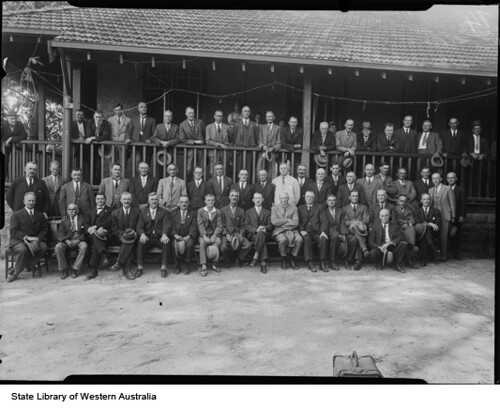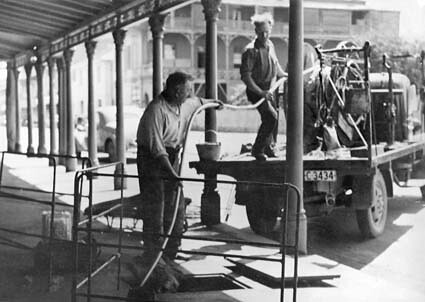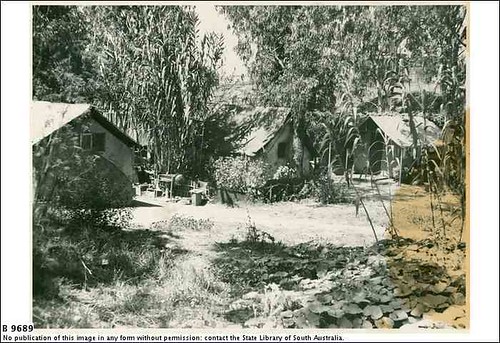 At the time leading up to the Great Depression, the federal government did not have a centralised unemployment assistance program. Other than relief from charities and a patchwork of agencies and private organisations, destitute people had to rely on employment projects and public works projects often funded by state government loans from overseas.
At the time leading up to the Great Depression, the federal government did not have a centralised unemployment assistance program. Other than relief from charities and a patchwork of agencies and private organisations, destitute people had to rely on employment projects and public works projects often funded by state government loans from overseas.After the Wall Street crash, the federal government allocated £1,000,000 to the states to provide relief to the unemployed. It was hoped that the money - to be used for road works - could also free up funds to help the unemployed in other areas. But the numbers of unemployed continued to grow.
 In July 1930, a further £1,000,000 was made available to the states for proposed public works (only projects that turned enough of a profit to cover interest repayments on loans were accepted), followed by another £500,000 in December of that year. Most of the work generated was hard manual labour. The narrow road built to the summit of Mount Wellington in Tasmania is an example of the kinds of projects unemployed Australians were carrying out.
In July 1930, a further £1,000,000 was made available to the states for proposed public works (only projects that turned enough of a profit to cover interest repayments on loans were accepted), followed by another £500,000 in December of that year. Most of the work generated was hard manual labour. The narrow road built to the summit of Mount Wellington in Tasmania is an example of the kinds of projects unemployed Australians were carrying out. With so many people out of work, many men had no other option but to leave home and to try and find work elsewhere. For married men, work for the dole was sometimes available which would include pick and shovel work. The cash payment they received for this was often below the basic wage and it often meant working in poor conditions. Most work that was undertaken was public works, such as railways, roads and water supply.
With so many people out of work, many men had no other option but to leave home and to try and find work elsewhere. For married men, work for the dole was sometimes available which would include pick and shovel work. The cash payment they received for this was often below the basic wage and it often meant working in poor conditions. Most work that was undertaken was public works, such as railways, roads and water supply.Failure to accept work for the dole would mean the men would not get paid and could be sent to the bush, far from families and with very poor living conditions. In the early 1930s the best a man could expect was one or two days work per week. By 1935 – 1936 there was only enough money to employ one fifth of the estimated 300,000 unemployed.
 Being unemployed had a severe impact on people’s standards of living. Many were evicted and had to live in ‘shanty towns’, which often lacked basic sanitation facilities and running water. A vast number also had to rely on charities and the ‘susso’ (food vouchers) to feed themselves and their families. Morale was low and family units fell apart, as humiliation at having to accept handouts from the government turned many husbands to alcohol and suicide.
Being unemployed had a severe impact on people’s standards of living. Many were evicted and had to live in ‘shanty towns’, which often lacked basic sanitation facilities and running water. A vast number also had to rely on charities and the ‘susso’ (food vouchers) to feed themselves and their families. Morale was low and family units fell apart, as humiliation at having to accept handouts from the government turned many husbands to alcohol and suicide.Exercises:
On a new page in your books put the Heading “Work for the Dole”. Under the heading write a 1/2 page summary based upon the information above. After you have completed the summary, using Microsoft Word create a newspaper front page which includes the name of the newspaper, the headline "Out of Work!" and an interview with someone who has lost their job. Once finished print out the front page and glue it into your books on a new page.




 2:05 AM
2:05 AM
 Mark
Mark



0 comments:
Post a Comment